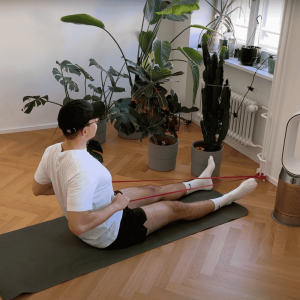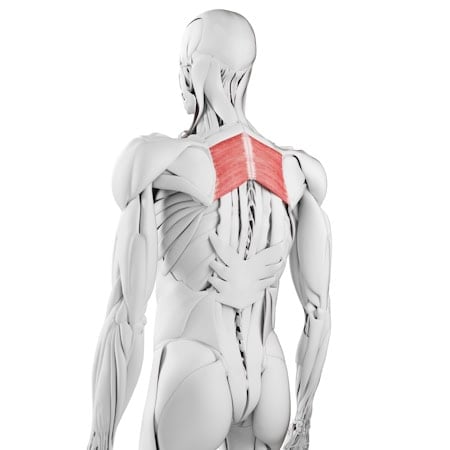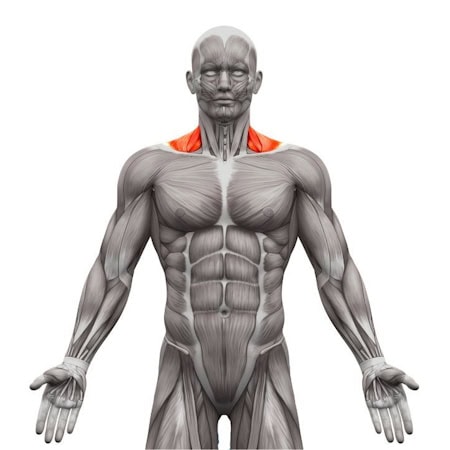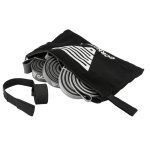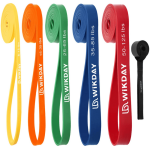Seated Resistance Band Rows - Anchored
How to do Seated Resistance Band Rows - Anchored?
Seated resistance band rows are an effective exercise for strengthening the back, shoulders, and arms. In this movement, you sit on the floor with a resistance band anchored to a stable point in front of you and pull the band toward your torso, mimicking the row movement. This exercise targets the muscles of the upper and mid-back, making it ideal for improving posture, increasing back strength, and balancing out muscles that are often neglected in daily life. Seated band rows are a great alternative to cable rows and are easily performed at home or in the gym.
Steps to Perform a Proper Seated Resistance Band Row:
1. Set Up with a Stable Anchor Point:
• Anchor a resistance band securely to a low, stable point in front of you (like a door anchor or a sturdy object).
• Sit on the floor facing the anchor, with your legs extended straight in front of you. Keep a slight bend in your knees for comfort.
2. Hold the Band with a Neutral Grip:
• Grab the handles or ends of the band with a neutral grip (palms facing each other).
• Sit up tall, with your chest lifted and shoulders down and back, keeping your spine straight and your core engaged.
3. Engage Your Core and Prepare for the Row:
• Before starting the row, ensure that the resistance band has slight tension to engage your back from the very start.
• Keep your feet flexed, resting your heels on the floor for stability.
4. Pull the Band Toward Your Torso:
• Exhale as you pull the band toward your torso, leading with your elbows. Squeeze your shoulder blades together as you pull, engaging your mid-back muscles.
• Keep your elbows close to your body and avoid flaring them out to the sides.
5. Return to the Starting Position:
• Inhale as you slowly extend your arms back to the starting position, maintaining control and tension in the band.
• Keep a slight bend in your elbows and avoid letting the band snap back to ensure continuous engagement of your back muscles.
6. Repeat the Movement:
• Perform the desired number of repetitions, focusing on smooth, controlled movements and maintaining core engagement throughout the exercise.
Benefits of Seated Resistance Band Rows
• Strengthens the Upper and Mid-Back: Seated rows target the latissimus dorsi, rhomboids, and trapezius, helping to build strength in the upper and mid-back muscles essential for posture and stability.
• Improves Posture: This exercise helps strengthen the muscles that retract the shoulder blades, combating the effects of poor posture caused by prolonged sitting or slouching.
• Enhances Shoulder Stability: By strengthening the muscles around the shoulder blades, seated rows help improve shoulder stability and reduce the risk of shoulder injuries.
• Builds Functional Strength: Seated band rows improve functional pulling strength, which translates to better performance in daily activities that require lifting or pulling.
• Low-Impact on Joints: This exercise is gentle on the joints, making it suitable for individuals with joint issues or those recovering from upper-body injuries.
• Portable and Versatile: Resistance bands are lightweight and portable, making seated rows easy to perform at home, in the gym, or while traveling.
• Great for Core Stability: This exercise engages the core to stabilize the torso, promoting core strength and balance during other movements.
Common Mistakes to Avoid
• Rounding the Back: Avoid slouching or rounding your back. Keep your spine neutral, chest lifted, and core engaged to maintain proper posture.
• Overextending the Shoulders: Avoid letting your shoulders roll forward or overextending at the end of the row. Keep your shoulders pulled back and down throughout the movement.
• Using Momentum: Perform the exercise with control rather than relying on momentum to pull the band. Controlled movement engages the muscles more effectively and reduces injury risk.
• Shrugging the Shoulders: Avoid shrugging your shoulders toward your ears. Keep them relaxed and down to engage the correct muscles and avoid unnecessary tension.
• Not Engaging the Core: Keep your core tight throughout the exercise to prevent your torso from leaning back or rocking, which reduces the effectiveness of the movement.
Tips for the proper execution of Seated Resistance Band Rows - Anchored
Sit Tall: Keep your spine straight and chest lifted to avoid slouching and to maximize muscle engagement.
Engage the Core: Maintain core engagement to stabilize your torso, preventing any excessive rocking or leaning.
Squeeze the Shoulder Blades: Focus on squeezing your shoulder blades together as you pull to fully engage your back muscles.
Control the Movement: Perform the movement slowly and with control, especially when returning to the starting position, to keep tension in the muscles.
Breathing: Exhale as you pull the band toward you, and inhale as you return to the starting position. Steady breathing helps maintain rhythm and control.
Muscles worked when doing Seated Resistance Band Rows - Anchored
Primary Muscles:
•Latissimus Dorsi: The large muscles of the back are heavily engaged during the pull, helping with shoulder extension and stability.
•Rhomboids: Located between the shoulder blades, the rhomboids are responsible for retracting the scapula, helping to pull the shoulders back.
•Trapezius: The middle and lower trapezius muscles assist in stabilizing and moving the shoulder blades during the rowing motion.
Secondary Muscles:
•Rear Deltoids: The back of the shoulder helps stabilize the arm and assists in pulling.
•Biceps: The biceps assist in elbow flexion during the pull, working alongside the back muscles.
•Forearms: The forearms help stabilize the grip on the resistance band.
•Core: The abdominals and obliques work to stabilize the torso, preventing excess movement or rocking during the row.
Primary Muscle(s):
Secondary Muscle(s):
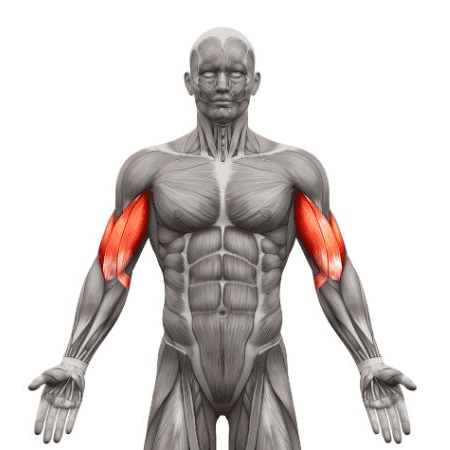
Biceps
Adjust the difficulty of Seated Resistance Band Rows - Anchored
How to make Seated Resistance Band Rows - Anchored harder?
How to make Seated Resistance Band Rows - Anchored easier?
How to make Seated Resistance Band Rows - Anchored harder?
To make Seated Resistance Band Rows - Anchored harder:
-
Use a Heavier Resistance Band: Increase the intensity by using a band with higher resistance, challenging your back and arm muscles further.
-
Increase Distance from the Anchor Point: Sit farther from the anchor to increase band tension, making the exercise more challenging.
-
Add a Pause: Pause for 2-3 seconds when the band is closest to your torso, increasing time under tension and further engaging your back muscles.
-
Increase Repetitions or Sets: Perform additional repetitions or sets to increase endurance and further challenge your muscles.
How to make Seated Resistance Band Rows - Anchored easier?
To make Seated Resistance Band Rows - Anchored easier:
-
Use a Lighter Resistance Band: Start with a band that provides less resistance to make the movement more manageable, allowing you to focus on form.
-
Move Closer to the Anchor Point: Reduce the resistance by sitting closer to the anchor, making it easier to pull the band toward you.
-
Perform Fewer Repetitions: Start with a smaller number of repetitions (e.g., 8-10) and increase gradually as you build strength.

